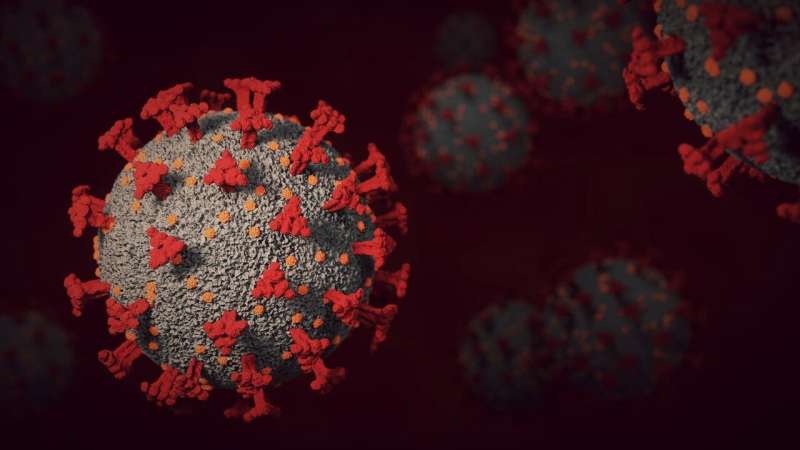
The World Health Organization designated COVID-19 variant B.1.1.529, named omicron, a “variant of concern” on Nov. 26, 2021, and the first confirmed case in the U.S. was on Dec. 1, 2021. Since then, the Centers for Disease Control and Prevention (CDC) has classified two subvariants, BA.1.1 and BA.2.
All omicron subvariants are classified as variants of concern, the third highest of four classifications.
BA.2 severity and contagion
BA.2, the third classified omicron subvariant in the U.S., is quickly accounting for more and more COVID-19 cases. It is rapidly spreading, accounting for 55% of all U.S. cases at the end of March, up from 7.4% of cases at the end of February, according to the CDC.
All omicron subvariants, including BA.2, are characterized as potentially more transmissible than previous strains such as delta, though generally cause less severe disease and fewer hospitalizations and deaths, according to the CDC. However, people who have not been vaccinated or who have not received a booster may still be at risk of severe illness with omicron variants.
While data are still emerging, the BA.2 subvariant appears to spread more rapidly than previous omicron variants, according to the UK Health Security Agency’s weekly report for March 25. They find “no evidence of a greater risk of hospitalization,” though this could change as more evidence is reviewed.
“Because it is more contagious, there is a risk of increase in cases in the community, especially as other public health measures, such as masking, are no longer enforced in many public areas while immunity from vaccination is waning down,” says Raymund Razonable, M.D., a Mayo Clinic infectious diseases expert.
Clinical data on BA.2 is not yet available in the U.S., as the first cases were identified in the last couple months.
“We do not yet know if it has a higher potential for severe disease,” Dr. Razonable says. “Reports from other countries show similar symptoms, such as fever, headache, fatigue and respiratory symptoms. There are no identifying characteristics, so people with these nonspecific symptoms should get tested so they can get treated early if they are positive for the virus.”
Further pandemic context
Overall, new U.S. cases of COVID-19 peaked in January 2022 and have dropped significantly since then, while deaths peaked in January 2021, with spikes in September 2021 and February 2022 that nearly reached January 2021 levels, according to the CDC. Daily cases and deaths have decreased by more than 50% in the last 30 days, the CDC notes. However, the overall death toll continues to climb, reaching 976,229 on March 29, according to the CDC.
Omicron subvariant vaccination
Masking, testing and vaccination remain the best way to slow the spread of all COVID-19 variants. The CDC recommends the Pfizer or Moderna vaccines for the unvaccinated and as a booster for those 12 and older who received any of the vaccines. The Pfizer vaccine also is now authorized for children five to 11.
Omicron subvariant treatment
Currently the preferred drugs for treatment for all omicron subvariants, including BA.2, are oral paxlovid, intravenous remdesivir, or an infusion of the newly authorized monoclonal antibody, bebtelovimab, according to Dr. Razonable.
The Food and Drug Administration (FDA) issued an emergency use authorization for bebtelovimab on Feb. 11. All Mayo Clinic sites began using the treatment according to FDA guidelines in March as the preferred monoclonal antibody treatment.
“In areas where BA.2 has exceeded 50% of cases, the Department of Health and Human Services recommends using bebtelovimab as the preferred monoclonal antibody for treatment, since monoclonal antibody therapy sotrovimab is not likely going to be effective based on experimental data,” Dr. Razonable says.
Because bebtelovimab is the newest monoclonal antibody treatment for COVID-19, data on its efficacy is still emerging. Lab investigation clarifies that it works similarly to other monoclonal antibodies, and in a clinical trial, it was tested while delta and alpha COVID-19 strains were prominent. The FDA states it “has a mechanism of action similar to other anti-SARS-CoV-2 monoclonal antibodies” which have shown to reduce progression toward severe illness, hospitalization and death in Phase 3 clinical trials. The FDA recommends bebtelovimab as soon as possible and within seven days of COVID-19 symptoms for people 12 and older (and at least 88 pounds) at risk of advancing to severe disease. However, bebtelovimab is not authorized for patients who have been hospitalized with COVID-19.
Researchers studied bebtelovimab’s effectiveness in a placebo-controlled Phase 2 clinical trial of low-risk patients, though prior to the emergence of BA.2. They found that bebtelovimab was associated with a reduction in length of time with symptoms and a decrease in viral load.
In that same trial, the researchers also looked at its effectiveness in a randomized trial of mostly high-risk patients, and high-risk patients in an open-label treatment arm. They found the therapy was associated with lower rates of hospitalization and death; however, the FDA noted that, “Conclusions are limited as these data are from different trials that were conducted when different viral variants were circulating, and baseline risk factors varied.”
Source: Read Full Article